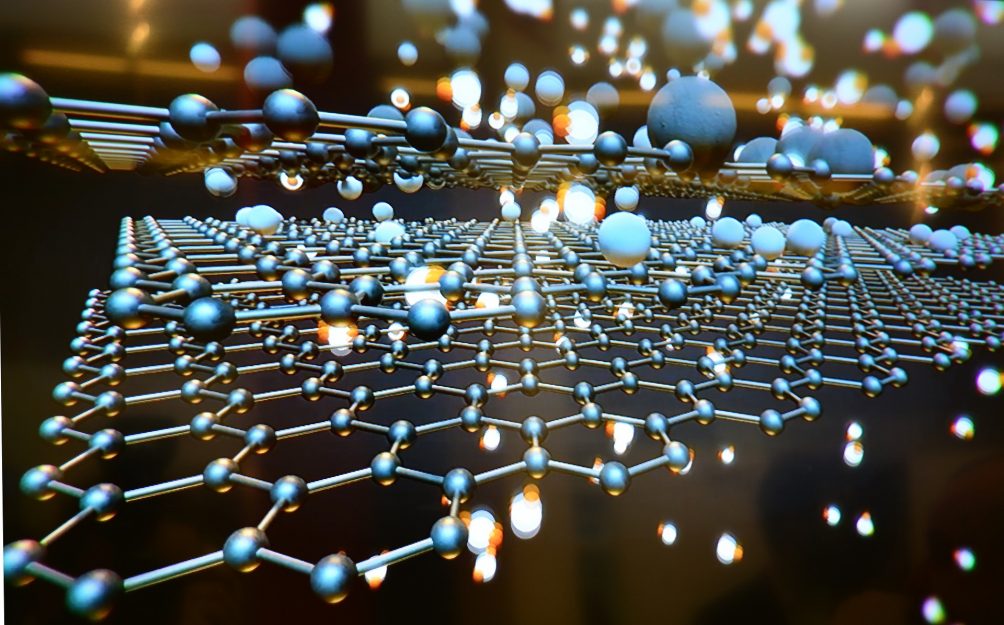Electrical nanostructures Resonance of surface plasmons in structures with nanometer-sized structures (Localized Surface Plasmon Resonance) PhD in nano-microelectronics
Researcher and author: Dr. ( Afshin Rashid)
Note: The intensification of surface plasmons in structures with nanometer dimensions is called Localized Surface Plasmon Resonance. Localized superficial plasmons are non-diffuse excitation conduction electrons of metal nanostructures to which an electromagnetic field is coupled. Plasmonic waves are created using the scattering problem of a conducting nanoparticle whose dimensions are below the wavelength of a high-excitation electromagnetic field.
The interaction of a particle of size d with electromagnetic waves with excitation wavelength λ can be investigated in various analytical, semi-analytical and numerical methods. Of course, in these analyzes, it is always assumed that d≪λ, that is, the particle size is much smaller than the wavelength. The coordinated oscillation phase of an electromagnetic field at a particle volume is assumed to be constant.
The following conditions are effective in the stimulation of localized superficial plasmons and their characteristics:
_ Electronic properties of nanoparticles
_ Size and shape of nanoparticles
_ Temperature properties of nanoparticles
_ Dielectric surrounding nanoparticles
Of course, it is important to note that by moving away from the surface of the metal nanoparticle, the intensity of the electromagnetic field (specifically the electric field intensity) decreases exponentially. In this nanoparticle, the created electromagnetic field is localized, compressed and improved. Slight changes in the dielectric around the nanoparticle affect the amplification of surface plasmons, so that these changes manifest themselves in the amount of beam scattered, the absorbed beam, or the change in wavelength. These changes can be measured using optical characteristics. The oscillations of surface electrons and the electric field around them indicate the intensification of localized surface plasmons.
With technology approaching the aggregation of optoelectronic circuits, fabrication problems and phenomena that helped prevent further compression of the structure led to the use of plasmonic structures and plasmonic waves. These nanostructures are composed of metal and dielectric, the dimensions of which are below the excitation wavelength (the wavelength of the beam that excites the plasmonic waves). Plasmonics is based on the process of interaction between electromagnetic waves and conducting electrons in nanoscale metals. In superficial plasmon plasmons, with the introduction of their working foundation, there is its field formulation and how these structures exceed the diffraction limit.Nanostructures have fundamental differences, both in terms of synthesis and production, as well as in terms of properties and applications. In general, the electrical, optical, magnetic, surface, etc. properties of these three structures are fundamentally different from each other, and of course their applications are also different. One-dimensional nanostructures can be used for electronic connections, while zero-dimensional and two-dimensional nanomaterials do not. The main basis of nanotechnology is the use of materials. Every material in space has three dimensions of length, width and height. If in materials at least one of these three dimensions is in the nanometer range, it is called a substance, a nanostructure.
Conclusion :
Resonance of surface plasmons in structures with nanometer dimensions is called Localized Surface Plasmon Resonance. Localized superficial plasmons are non-diffuse excitation conduction electrons of metal nanostructures to which an electromagnetic field is coupled. Plasmonic waves are created using the scattering problem of a conducting nanoparticle whose dimensions are below the wavelength of a high-excitation electromagnetic field.
Researcher and author: Dr. ( Afshin Rashid)
PhD in Nano-Microelectronics




